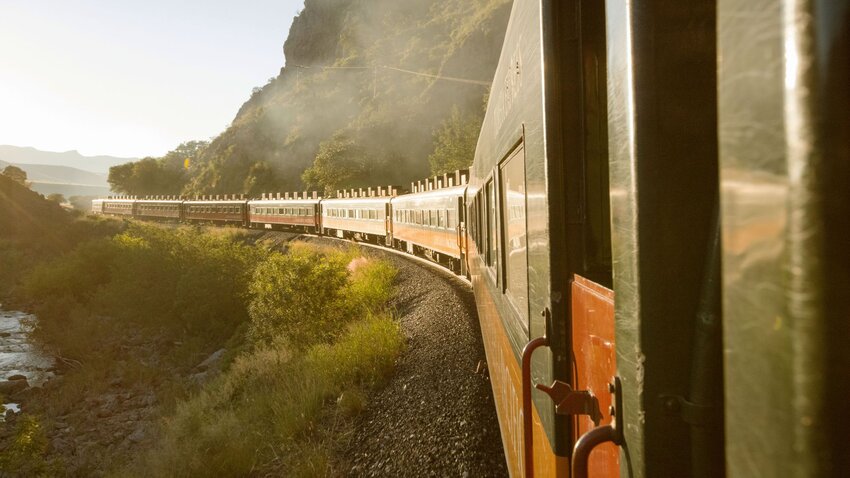Located in the Sierra Occidental Mountains of Northwest Mexico is one of Mexico’s secret treasures. Known as the Copper Canyon, Barrancas del Cobre is actually a series of six copper- and green-clad canyons four times larger than the U.S. Grand Canyon. It stretches from Chihuahua to Los Mochis, and El Chepe, the only passenger train in Mexico, winds through these canyons revealing stunning landscapes as it traverses from 8,000 feet to sea level. With 87 tunnels and 36 bridges, it's a totally unique and wildly inspiring journey.
Researching and planning your trip can be tricky, as the train only travels in one direction three days a week and not all trains stop at every station. Because of this, you have to carefully consider where you would like to stay overnight and how many nights you can stay to catch the right train to your next destination. Accommodation and meal options are fairly limited within the canyon, but both Chihuahua and El Fuerte/Los Mochis (the beginning and end of the trip, respectively) have a good selection.
You can do the entire trip in one day if you like, but making an overnight stop or two will make your journey more memorable. If you do stay overnight, you should plan for at least three days, but you can schedule multiple overnight stops for up to 14 days. As a happy medium, here's how to complete the journey in seven days.
Day 1 – Chihuahua
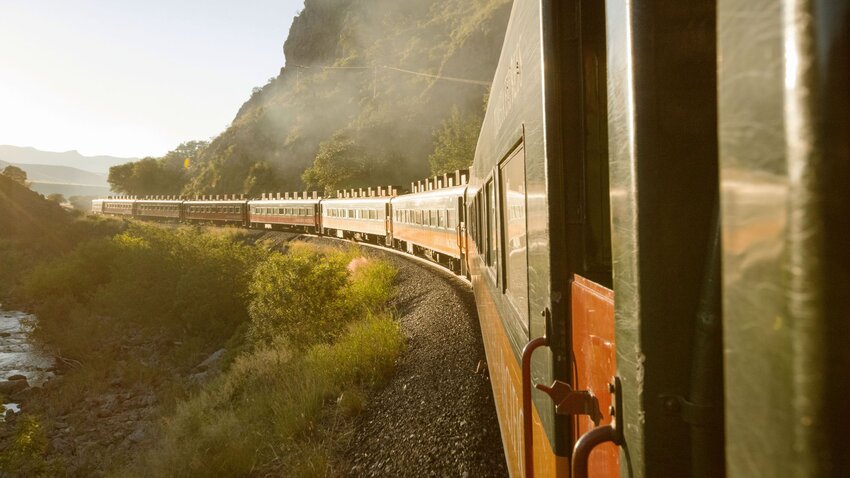
Chihuahua, located in northwestern Mexico about 500 miles south of the Texas border, features many interesting historical sites within the city center as well as nearby natural attractions to visit. You can easily extend your trip with extra days here.
The Chihuahua Cathedral, which sits next to the central Plaza de Armas, took almost a century to build and showcases two towers, which are so identical that from the side they appear to be one. Also, don’t miss the niche in the shape of a cross with an image of the Christ of Mapimi.
For the outdoor adventurer, Los Cumbres de Majalca National Park is just north of the city and a great place for hiking or camping amongst the unique rock formations (and only costs $4 to visit). The Nombre de Dios, or Grottoes, are a series of caves filled with incredible stalactites and stalagmites formed over millions of years. Admission to the Grottoes is only $3, but beware that they are closed to the public on Mondays.
Day 2 – Chihuahua's Mennonite Community
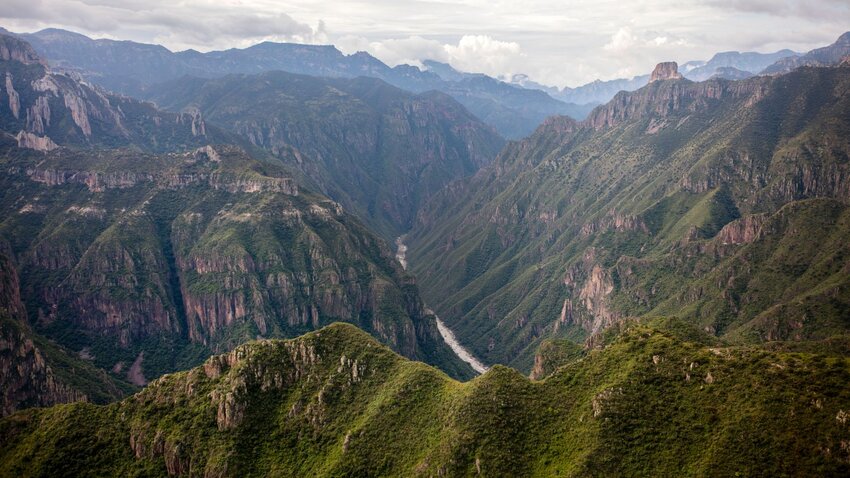
A short drive out of Chihuahua is a Mennonite settlement that's opened its doors to tourism and sharing its culture. A walk through the streets of the Cuauhtémoc City community will show you a mix of old houses built of adobe (a mixture of sand and lime) with wooden roofs, preserving the traditional design in which the stable was kept near the kitchen to protect the cattle from the cold. Both the newer and adobe-style homes are beautifully landscaped with flowers and trees that blend perfectly with vegetable gardens and into fields of corn, beans, oats and wheat.
After admiring the houses, stop by El Corredor Comercial Menonita (Mennonite Commercial Corridor), which includes plenty of shopping, metalworking shops, museums, and a cultural center. Be sure to try the rich cheese produced by the local women while you’re there.
If you’re still hungry afterward, Los Arcos Pizzeria serves a house specialty made with local ingredients ranging from the wheat crust to Mennonite cheeses and meats. Keep in mind that alcoholic beverages are not available anywhere within the Mennonite territory.
Day 3 – Creel/Rarámuri Community/Hiking
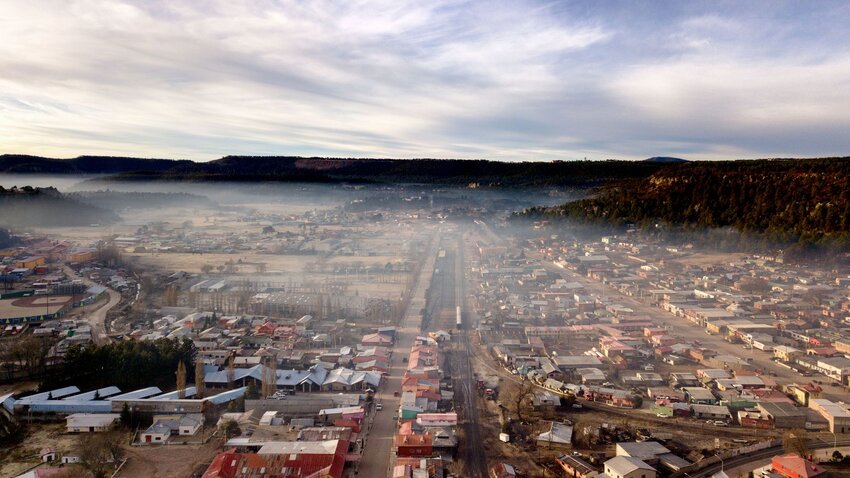
Originally a vibrant logging town and home to the indigenous Rarámuri, Creel is now primarily a tourist town with about 5,000 year-round residents. If you only have one full day in Creel, book a tour to nearby sites through one of the local tour guides, like Three Amigos or Eco Alter Native Tours. Tours can include hiking, cycling, or horseback riding, but no matter which you choose, bring plenty of water, sunscreen, and a hat with you as it can get very hot here during the day.
There are numerous hiking trails around Creel including Valle de los Monjes (Valley of the Monks). Originally, this was called Valle de Bisabirachi (Valley of the Erect Penises), but was renamed by Spanish explorers.
Another beautiful area for hiking is the waterfalls Cascada Piedra Bolada (Round Stone Waterfall) and Basaseachi Falls. Bolada is the tallest, with a plunge of 1,500 feet into a rounded-out rock formation, giving the falls their name, whicle Basaseachi is the second-tallest waterfall in Mexico with a drop of 807 feet. Both are best seen between June and October as they may dry up during the rest of the year, depending on rainfall.
Unfortunately, there aren’t a ton of restaurants or hotels in Creel, although you will find many mariachi performers throughout the town. For lodging, try the Villa Mexicana Creel Mountain Lodge, which offers transportation from the train station and has many rooms with panoramic valley views.
The time you depart Creel will depend on which El Chepe train you’re catching – the Express or the Regional. If you want some quick things to do before taking the Regional train, stop by the Museo de Arte Popular, a small museum with displays and photographs of the Rarámuri culture. Another option is the Artesanias Mision Handicraft Store, selling a variety of baskets, dolls, textiles, and other handicrafts supporting the local Rarámuri community.
Once your train arrives, try to get a seat on the left-hand side if you're heading to Los Mochis (vice versa if heading to Chihuahua) as that’s where you'll have the best views.
Day 4 – Divisadero/Posada Barranca Areponápuchi Viewpoint/Canyon Rim Walk
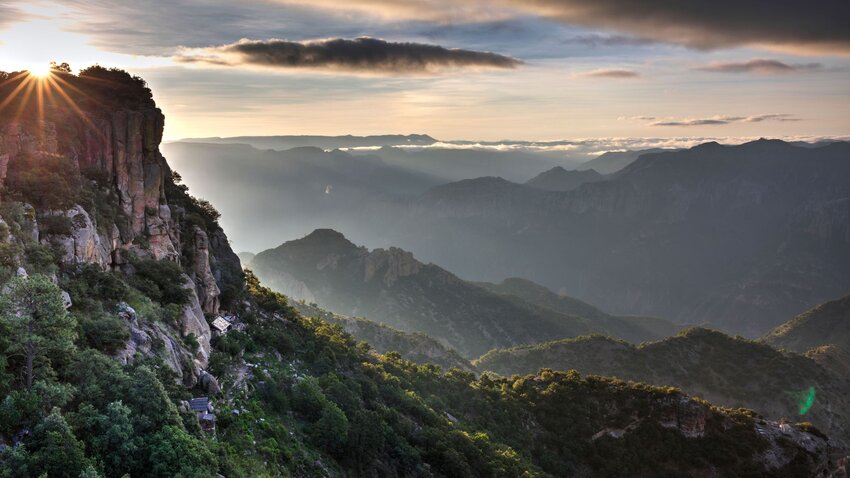
This portion of your journey will be the shortest as it only takes about an hour and a half to reach Divisadero and another 10 minutes to reach Posada Barrancas. (Note that the Express train does not stop in Posada Barrancas.)
The first hour is mostly pine-covered hilly landscape, and you can take some time to stand between the carriages and enjoy the fresh mountain air if it’s not too cold. As you near Divisadero, the scenery becomes more rugged and the valleys deepen; this is the start of the Copper Canyon itself, and while you can’t see the canyon when you arrive at the Divisadero station, it’s still the best view of the entire trip. Every train stops here for 20 minutes, giving you a chance to admire the picturesque vistas. The panorama extends for miles and the colors change depending on the time of day. Birds of prey frequent the canyons in the evenings too, looking for their next meal.
If you aren’t spending the night here, listen closely for the train’s whistle indicating its imminent departure. This is also a great place to grab a quick bite to eat – look out for the popular stand by the station serving excellent tacos, quesadillas, empanadas, and gorditas.
The Chepe Regional stops at the Posada Barrancas station as well, just 10 minutes from Divisadero, next to the Areponápuchi village. You’ll find more food and activity options in Barrancas too, though there are only a couple of lodging options in this area and reservations are highly recommended, especially during the peak season of October to December.
If you can, book a room at Hotel Barrancas del Cobre, a hacienda-style hotel directly next door to the station with two sizes of comfortable rooms. You can also walk downhill into the village to find a private cabana if need be. While there’s no restaurant at the hotel, an included breakfast is served at its sister hotel, Posada Barrancas Mirador, about a half-mile (uphill) walk away. Otherwise, you can walk into the village and find small tiendas with sandwiches or snacks.
Once you’ve settled into your room and had something to eat, it’s time to explore. The village itself only has about 25 houses, a few cabanas, and a tiny church. Arepo, as it is known by the locals, is the only village on the rim of the canyon so you’ll find incredible vistas everywhere.
A must-do activity in Areponápuchi is the canyon rim walk. Tours are available from either hotel for just under $6, but it’s also easy to do on your own if you don’t mind missing out on learning some local history and ecology. The path to the canyon rim is down some steps to the left of the Hotel Mirador, which leads to some spectacular views of the canyon and miles into the distance. Along many of the canyon walls you may see Tarahumara settlements in caves and wooden shacks, along with Tarahumara women and children selling handicrafts on the trail.
If you elect to walk into Arepo in late afternoon or evening, take a flashlight for your return as there is no street lighting except the moon and stars. However, that lack of light pollution in the canyon also makes stargazing an amazing experience. The nights are frequently cold and clear, so you’ll also want a jacket or blanket to keep you warm.
Day 5 – Canyon Adventure Park/Barrancas del Cobre Adventure Park
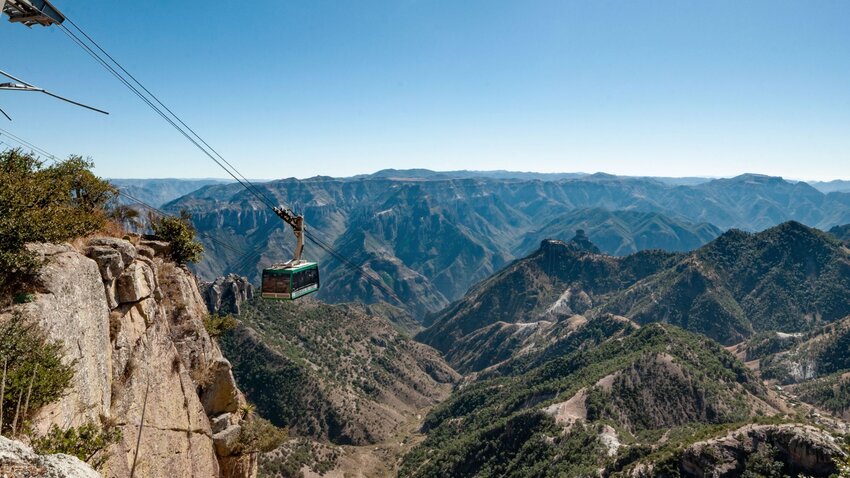
Start the day by catching the sunrise over the canyon. The Hotel Mirador has an incredible balcony area where you can grab some hot coffee and enjoy the view as the light first hits the canyon.
Following breakfast, head to the Parque Aventura Barrancas del Cobre (Canyon Adventure Park). There are shuttles to the park or it’s about a 40-minute walk, depending on how you want to start your day. Follow the road uphill and to the left past the train station for about 20 minutes until you come to a little wooden hut, then it’s another 20-minute walk through woods and onto a dirt road to the official park entry, which will cost a dollar or two. However, there's also a walkway built along the rim of the canyon that you can enjoy without entering the adventure park.
The adventure park includes several activities depending on how much time you have and your budget. The main attraction is the Ziprider, a zipline stretching across three canyons. It costs just under $50 and is well worth the thrill.
Other activities include rope courses for rappelling, rock climbing, a cable car descending into the canyon, a tree-top walk with 10 suspension bridges, cycling, trekking, and horseback riding. There’s also a children’s area for younger kids. Or you can take in the view from inside the glass-walled restaurant if you’re ready for a break.
Day 6 – El Fuerte
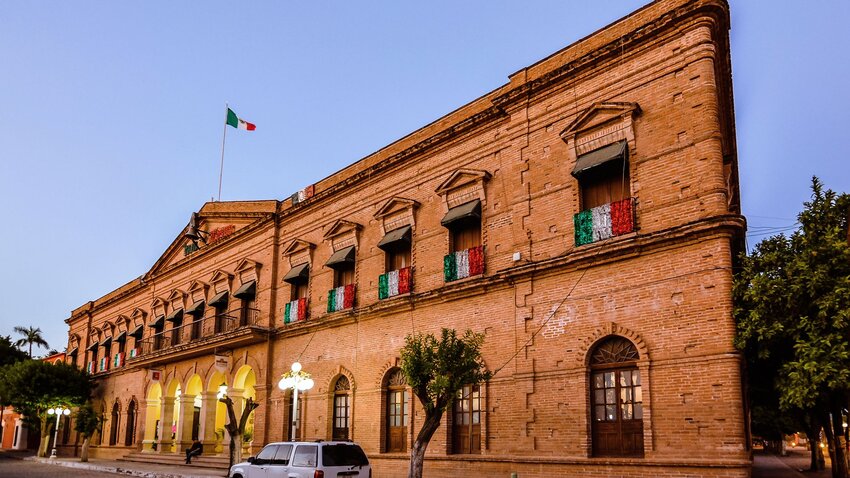
Depending on which train you’re on, you’ll need to get to the station very early in the morning or early afternoon. This will be the longest part of your train ride at about five and a half hours.
The first couple of hours of this last stretch is more of the same pine tree-clad hills, but then El Chepe enters a beautiful river valley known as Septentrion Canyon with towering cliffs on either side. In the spring, it’s full of pink-blossomed trees contrasted with the rocky riverbed, sparkling water, and copper-colored valley walls. If you’re lucky, you’ll catch a glimpse of some of the area’s colorful birds.
As you leave Septentrion Canyon, a big, blue mountain lake will appear. The train will pass over the Chinipas Bridge, giving you some incredible mountain and lake scenes. Leaving the canyon and entering Sinaloa, massive cacti start to appear on the hills and in fields. If you’re on the Express, you’ll arrive in El Fuerte in the early afternoon, and if you’re on the Regional train, you may get to see a blood-orange sunset as arrival is around 7:30 pm.
The station is about five miles from the El Fuerte city center. And since there’s no public transportation available, it’s best to take a shared taxi for about $3 to the center or have your hotel arrange transportation in advance.
Hacienda Santa Cruz is a great option here – it’s a colonial-style, family-run hotel on the main street with rooms built around a central courtyard. You’ll also find several restaurants and lodging options near the main square.
Take some time to explore El Fuerte if you can. This traditional Mexican town features several old colonial buildings and parks, and huge wooden doors are often left open to reveal manicured courtyards. The main square features a central gazebo protected by tall palm trees and the many fountains and statues pay tribute to founders and indigenous peoples.
Be sure to check out the Palacio Municipal, a majestic, salmon-colored building encompassing an entire block. Inside you’ll find a traditional open-air courtyard surrounded by two levels of archways decorated with trailing bougainvillea and a colorful mural painted in the stairwell to the second level. On the other side of the central plaza, you’ll find a beautifully restored Catholic church.
El Fuerte actually means “the fort” and is the birthplace of the legendary Zorro. On a hill just outside the central square is a replica of the original fort, now serving as a museum documenting the history of the city and its surrounding areas. A short hike from the center takes you to the Hill of the Mask and over 200 petroglyphs carved into the rocks. Or you can walk along the banks of the El Fuerte River behind the city, following a wide stone pathway.
Day 7 – Los Mochis
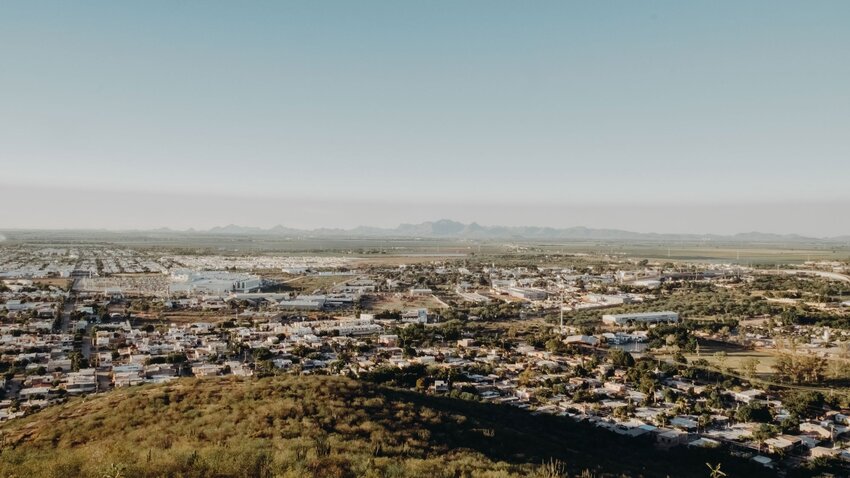
Los Mochis is the end of the journey and only a few hours away. You can travel by train to the end of the line, but a more traditional and economical way is by a colectivo (shared taxi van). Colectivos run throughout the day, giving you more flexibility and only cost between $3-4.
There isn’t a ton to do in Los Mochis beyond the city park, which is definitely worth walking through. But after all you’ve experienced over the past few days, a day of relaxing might be your preference.

